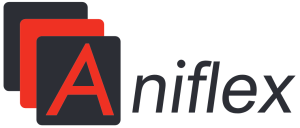Flexographic printing vs. other types of printing
Flexographic printing technology is particularly recommended for high-volume production. In addition, it provides the opportunity to design both standard (simple) labels and more complex designs that incorporate a variety of decorative techniques. How does flexography compare to other printing processes? Find out when it is the best solution. Read what it consists of and learn about its main advantages.
Flexographic printing
Flexographic label printing technology uses printing dies called polymers to apply ink to the self-adhesive material. Manufacturers of self-adhesive labels have the option of using water-based inks, which are greener and safer for the environment, but have printing limitations, and UV inks, which fix ultraviolet radiation. The resulting prints are extremely resistant to the elements, while also being safe.
What are the advantages of flexography?
The success of flexography is determined by its versatility and relatively low cost of manufacture. The main advantages of this method:
- high quality printing – the image and text are well saturated, and the colors are perfectly reproduced,
- possibility of using materials of different textures and thicknesses,
- use of paints that are food-safe,
- possibility of using a variety of decorative techniques – laminating, varnishing, embossing, screen printing, decorating, etc..,
- ease of adjusting the force of the die on the material,
- economical approach to costs for large inputs.
Flexographic printing vs. other methods
Modern flexographic printing works well as an alternative to digital technology. The creation of a single die allows for the production of a large number of high-quality reproductions that are a perfect copy of the original design. Flexographic printers most often recommend this solution for high-volume production of self-adhesive labels or packaging.
It is worth noting that flexography offers the ability to apply an image to various surfaces, including textured materials. Digital printing, on the other hand, works best on smooth raw materials.
What sets this method apart from the competition is the ability to use a wide range of decorative techniques. A flexo printer can easily perform finishing, perforation, varnishing, laminating, or back-gluing.
When is it worth choosing the flexography technique?
It is mainly recommended for mass production. If you need a small print run or want to implement changes to the image at the production stage, you can choose hybrid technology (a combination of flexography and digital printing). Flexographic labels can also be printed on metalized or ultra-clear films and can be richly decorated, which is why they are often chosen by companies that want to create an original effect and differentiate their products from the competition.
Flexographic printing plant
Do you need well-made self-adhesive or heat-shrinkable labels? Aniflex flexographic and digital printing company (https://aniflex.pl/) has an offer for you. Check out, the printing and finishing techniques used. Not sure what to choose? Order samples of our works!

